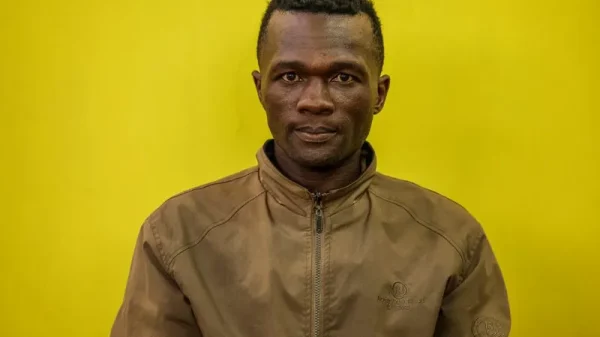The remains of a World War II soldier from Oregon, who had been missing for decades, have been identified and will soon return to the state for burial, federal authorities announced on Thursday.
U.S. Army Private William Calkins, who was 20 years old, was identified after his remains were exhumed along with those of other unknown soldiers from the Manila American Cemetery in the Philippines, according to the Department of Defense.
The Defense POW/MIA Accounting Agency (DPAA), responsible for recovering prisoners of war and service members missing in action, reported that Calkins was captured following the surrender of U.S. troops in the Bataan province to Japanese forces.
He endured the brutal 65-mile Bataan Death March and was later held at Cabanatuan POW Camp #1, where records indicate he died on November 1, 1942, at the age of 20.
In a news release, the DPAA included several Oregon newspaper clippings from the war era, one of which read:
“Word has been received in Salem that Pvt. William E. Calkins, formerly employed by the Perfection Bowling alleys, is a prisoner of war.”
Calkins was initially buried with other prisoners in a site known as Common Grave 704.

World War II Solider Remains Found (Photo: Marine Corps)
After the war, his remains were exhumed from the camp and relocated to the Philippine capital, where they were buried as “unknowns” at the Manila American Cemetery and Memorial. His remains remained unidentified until this year.
In 2018, as part of an effort to identify the unknown remains associated with Common Grave 704, the DPAA exhumed the remains again and sent them to a laboratory. There, scientists employed DNA analysis and other techniques to confirm Calkins’ identity.
A rosette will be placed next to Calkins’ name on the Walls of the Missing at the Manila American Cemetery to signify that he has been accounted for, the DPAA said.
Calkins’ remains are scheduled to return to Oregon for burial in September in Hillsboro, a suburb of Portland.
The DPAA noted that prisoners at Cabanatuan POW Camp #1 faced horrific conditions, with death rates soaring due to the lack of medicine and food.
“Because so many men were dying, burial parties worked every day. Each morning, the men would gather at the morgue and organize into teams to begin the march to the cemetery.
The camp adopted a mass internment system, burying all who died in one day in one common grave,” the agency said. “The burial party would deliver the dead to the cemetery and then dig the mass grave for the next day.”


























